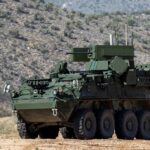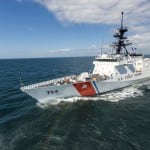By Geoff Fein Lockheed Martin [LMT] yesterday put its F-35B short take off vertical landing Joint Strike Fighter (JSF) into the air for the first time, marking the beginning of months of deliveries and flight tests of the next-generation Marine Corps fighter. BAE Systems test pilot Graham Tomlinson flew BF-1 for 44 minutes, reaching speeds up to 230 knots, he told reporters yesterday. "Any first flight on a new airplane you are really trying to prove from the moment you…
Contract Updates
Aerojet Rocketdyne Coleman Aerospace Inc. a wholly owned subsidiary of Aerojet Rocketdyne Inc. (Orlando, Florida) – $10,333,902
Aerojet Rocketdyne, Coleman Aerospace Inc., a wholly owned subsidiary of Aerojet Rocketdyne Inc., Orlando, Florida, is being awarded a $10,333,902 modification (P00258) to exercise an option to a previously awarded contract (HQ1047-14-C-0001) to increase calendar year 2026 program management office…
The Bell Boeing Joint Project Office (California, Maryland) – $262,069,451
The Bell Boeing Joint Project Office, California, Maryland, has been awarded a maximum $262,069,451 fixed-price-incentive, performance-based contract for V-22 Phase II consumable market basket items. This was a sole-source acquisition using justification 10 U.S. Code 3204 (a)(1), as stated in…
Northrop Grumman Systems Corp. (Oklahoma City, Oklahoma) – $264,867,008
Northrop Grumman Systems Corp., Oklahoma City, Oklahoma, has been awarded an estimated $264,867,008 modification to award a hybrid firm-fixed-price and cost-plus-fixed-fee delivery order (SPRTA1-26-F-0020) against a five-year indefinite-delivery/indefinite-quantity contract (SPRTA1-19-D-0001) for B-2 rudders. This was a sole-source acquisition using justification…
General Dynamics Land Systems Inc. (Sterling Heights, Michigan) – $11,146,013
General Dynamics Land Systems Inc., Sterling Heights, Michigan, was awarded an $11,146,013 modification (P00122) to contract W56HZV-22-C-0012 to exercise option hours for Abrams system technical support. Work will be performed in Sterling Heights, Michigan, with an estimated completion date of…













